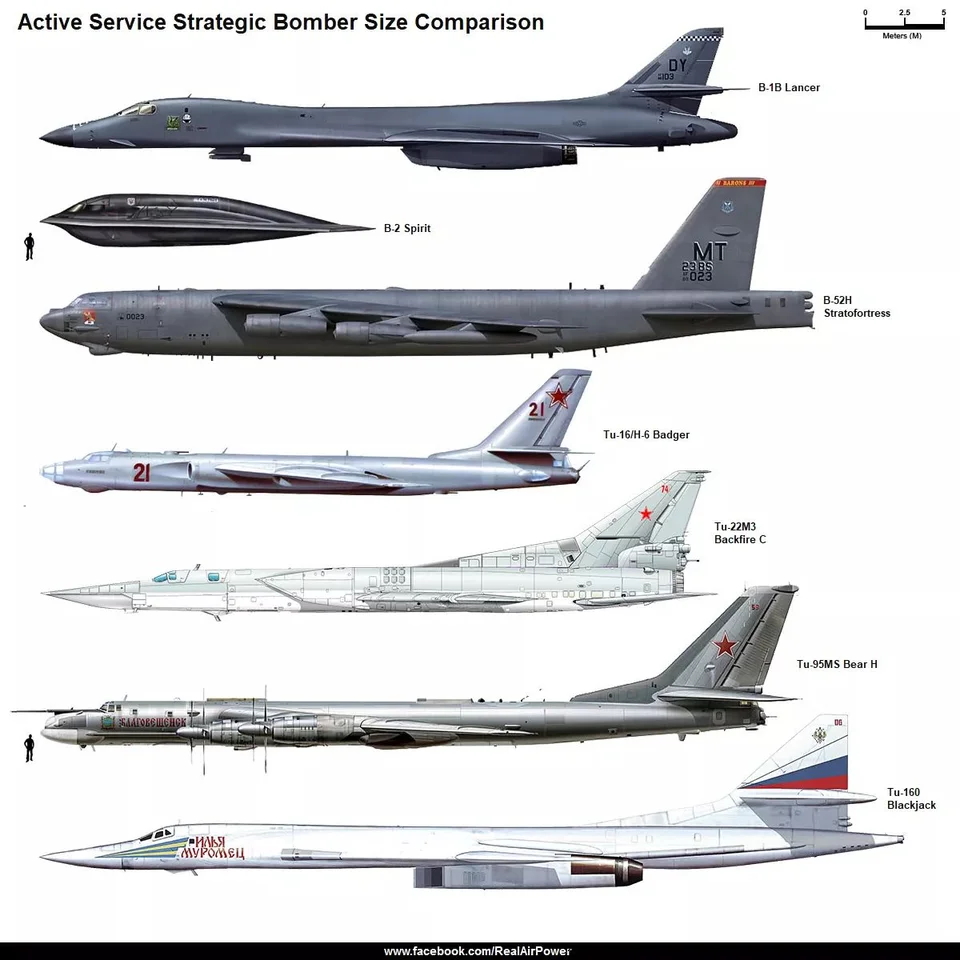
A strategic bomber is a mid-to-long range heavy bomber aircraft designed to drop large amounts of ordnance onto a distant target for the purposes of debilitating the enemy’s capacity to wage war. Unlike tactical bombers and ground attack aircraft, which are used in air interdiction operations to attack troops and military equipment, strategic bombers are built to fly into enemy territory to destroy strategic targets (e.g., major military installations, factories, and cities). In addition to strategic bombing, strategic bombers can be used for tactical missions. The United States, Russia, China, and North Korea maintain strategic bombers
More recent strategic bombers such as the Rockwell International B-1B Lancer bomber, the Tupolev Tu-160, and the Northrop Grumman B-2 Spirit bomber incorporate various levels of stealth technology in their designs in an effort to avoid detection, especially by radar networks.
Non-stealth strategic bombers, e.g., the venerable B-52 (last produced in 1962) or the equally venerable Tupolev Tu-95 are still relevant through their carrying of air-launched cruise missiles and other “stand-off” weapons like the JASSM and the JDAM.
Indeed, it is likely that the USAF’s B-52 fleet will, with continual upgrades, outlive its squadrons of B-1Bs. However, the USAF has recently launched a program to study the production of a new strategic bomber to complement the current fleet. It is likely that this bomber would also serve as a replacement for both the B-52 and B-1.
In the case of the Russian Air Force, new Tu-160 strategic bombers are expected to be delivered on a regular basis over the course of the next 10 to 20 years. In addition the current Tu-95 and Tu-160 bombers will be periodically updated, as was seen during the 1990s with the Tu-22M bombers.
During the Cold War, strategic bombers were primarily armed with nuclear weapons. However, since the end of the Cold War, bombers originally intended for strategic use have been exclusively employed using non-nuclear, high explosive weapons. During Operation Desert Storm, the military action in Afghanistan, and the Invasion of Iraq in 2003, American B-52s and B-1s were employed in mostly tactical roles. During the Soviet-Afghan war in 1979–88, Soviet Air Force Tu-95 carried out several mass air raids in various regions of that country. The North Korean air force has approximately 30 Harbin H-6 bombers in airworthy condition, giving it the ability to strike strategic targets in South Korea or western Japan.
The B-2 Spirit is a unique stealth heavy bomber built with flying wing and is built by Northrop Grumman for the United States Air Force. They are designed to penetrate areas of highly dense anti-aircraft defenses that would be hard or impossible to penetrate by conventional aircraft.
The Air-Launched Cruise Missile (ALCM) entered service with the US air force in 1982. This weapon had folding wings which extended when it was dropped from the carrier aircraft, and was powered by a small turbojet engine. Designed exclusively for low-level flight, the ALCM used a radar altimeter to maintain height and a map-matching process known as terrain comparison (TerCom) to give very precise navigation. The nuclear-armed version (AGM-96B) had a 200 kT warhead, a CEP of 30 m and a range of some 2,500 km. The AGM-96C was conventionally armed, with a high-explosive warhead, and this version demonstrated its effectiveness and accuracy when thirty-five were launched by B-52s during the Gulf War. B-52s could carry up to twelve and B-1Bs twenty-four.
Soviet stand-off missile development followed a similar pattern and time-scale, although in the early stages of the Cold War the missiles tended to be much larger and less effective than their US counterparts. Indeed, the first missile designed for use by strategic bombers, the AS-3 (NATO = ‘Kangaroo’) remains the largest air-launched missile to go into service, with a length of some 15 m, a wingspan of 9 m and a weight of 11,000 kg; only one could be carried by a Tu-95 (Bear-B). It did, however, have a useful range (650 km) and a high speed (Mach 2), and with an 800 kT warhead it was targeted against large area targets such as cities and ports.
The AS-15 (NATO = ‘Kent’) was much smaller and generally similar in size, performance and role to the US Tomahawk; sixteen could be carried by the Tu-95 Bear-B and twelve by the Tu-160 Blackjack. It carried a 200 kT nuclear warhead and flew at high subsonic speeds over a range of some 3,000 km at a height of 200 m, with an accuracy (CEP) of 150 m.